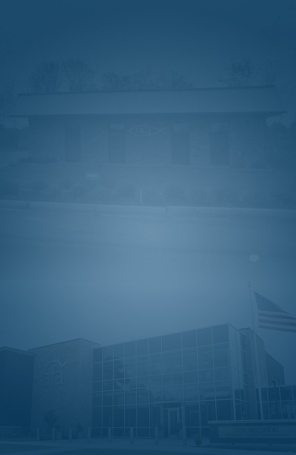The Truth About Trafficking
Sign up for a six month free
trial of The Stand Magazine!
The month of January is important in the fight against sexual exploitation. Since 2010, differing presidents have all deemed this month as “Human Trafficking Prevention Month.”
But what exactly is human trafficking?
Some Americans think that trafficking is someone sitting in a creepy white van at the local Walmart. Others picture it as something only happening overseas. And a large percentage of people even imagine the movie Taken as a spot-on presentation of the underbelly of human trafficking! While each of these instances occurs, it does not accurately depict common forms of trafficking in the United States. In reality, it is a heinous life-altering crime happening in every state, city, and town across America.
According to Homeland Security, “Human trafficking involves the use of force, fraud, or coercion to obtain some type of labor or commercial sex act.”
And before I go any further, it is essential to note that human trafficking is an overhead term. There are multiple types of trafficking – sex trafficking (which I will focus on) and the second is forced labor trafficking. The United States Department of State claims that human trafficking enslaves “27.6 million victims worldwide.” Although, due to the underground nature of the industry, that number is likely higher.
What exactly can be done to stop it?
A big reason that trafficking flourishes is due to the many misconceptions shared among social media, mainstream media, and other platforms. To accurately raise awareness, we must first know the truth.
Below are some key sex trafficking facts from the anti-trafficking organization Shared Hope International (SHI):
- Children are commonly thrown into sex trafficking lifestyle between the ages of 14-16(but can be younger).
- Traffickers are known to lure victims with “promises of protection, love, adventure, home, and opportunity.”
- Traffickers often use social media to recruit their victims, and appear to be younger than they actually are.
- Due to widespread misinformation, victims remain unidentified and held captive.
What can everyday folks do with that information?
As a Bible-believing family, parents may read those stats and think, “Well, there’s no way that could happen to my child! We live in a safe neighborhood. We care for our children. They’re protected from all of these evils!”
But isn’t Satan known as the great deceiver?
Make no excuse. The enemy knows that children are a prime target for this lifestyle. Traffickers don’t care about the victim’s age, race, religion, or economic status; they only see dollar signs.
If a child has access to the internet, social media platforms, or gaming servers, they are at risk of being targeted. Traffickers are known to prey on children via these methods. They will create fake accounts pretending to be younger than they really are and build relationships with victims. After relationships are established, then things start to turn sour.
These vile men and women will start to blackmail these children. Usually, they will ask them to send an inappropriate picture and use it, plus other information they have gained, to coerce the child. If that doesn’t work, they will turn to threats of violence against the victim’s loved ones.
I have heard stories that have made me physically ill. The horrors inflicted on these children are, at times, unbelievable. But please know that the purpose of this article isn’t to scare you. Instead, it is meant to equip! We can protect our young loved ones as well as other children and teens by becoming aware.
How do you know if someone is being trafficked or groomed?
I’m so glad you asked that question! My friends at SHI have an excellent shareable resource for that as well.
Just to mention a few, these signs include:
- Older boyfriend, new friends with a different lifestyle, or gang affiliations/involvement
- Withdrawn, depressed, distracted
- Overly tired in class or unable to keep up with studies
- Sudden inappropriate dress or sexualized behavior
- Displays expensive clothes, accessories, shoes, or a new tattoo (often used by pimps as a way to brand victims)
Likewise, traffickers often exhibit these types of characteristics:
- May not become sexual or forceful until trust is built
- Jealous, controlling, or violent
- Significantly older than female companions
- Accompanies and translates for, or speaks for, the victim at school or medical appointments
- Befriends a child online through social media, gaming, or apps that provide private communications
If you believe someone is being trafficked, I would encourage you to call 911 or the National Human Trafficking Hotline at 1.888.373.7888. There are trained teams to handle these situations. Do not act alone. Traffickers can be dangerous, so it is important to let authorities do their job.
As William Wilberforce once said, “You may choose to look the other way but you can never say again that you did not know.”
And just like Wilberforce, once you see these horrors firsthand, you will never be able to forget. I pray that the Lord gives you a burden for these precious men, women, and children. May we continue to fight the good fight and declare freedom for all.
Speak up for those who cannot speak for themselves,
for the rights of all who are destitute.
Speak up and judge fairly;
defend the rights of the poor and needy (Proverbs 31:8-9).
P.S. I always recommend that everyone interested in raising awareness do their own research. It helps us all better connect to the reality of this atrocious issue. A few of my favorite websites are Polaris Project, National Center on Sexual Exploitation (also known as NCOSE), National Human Trafficking Hotline, and Shared Hope International.

Sign up for a free six-month trial of
The Stand Magazine!
Sign up for free to receive notable blogs delivered to your email weekly.



















